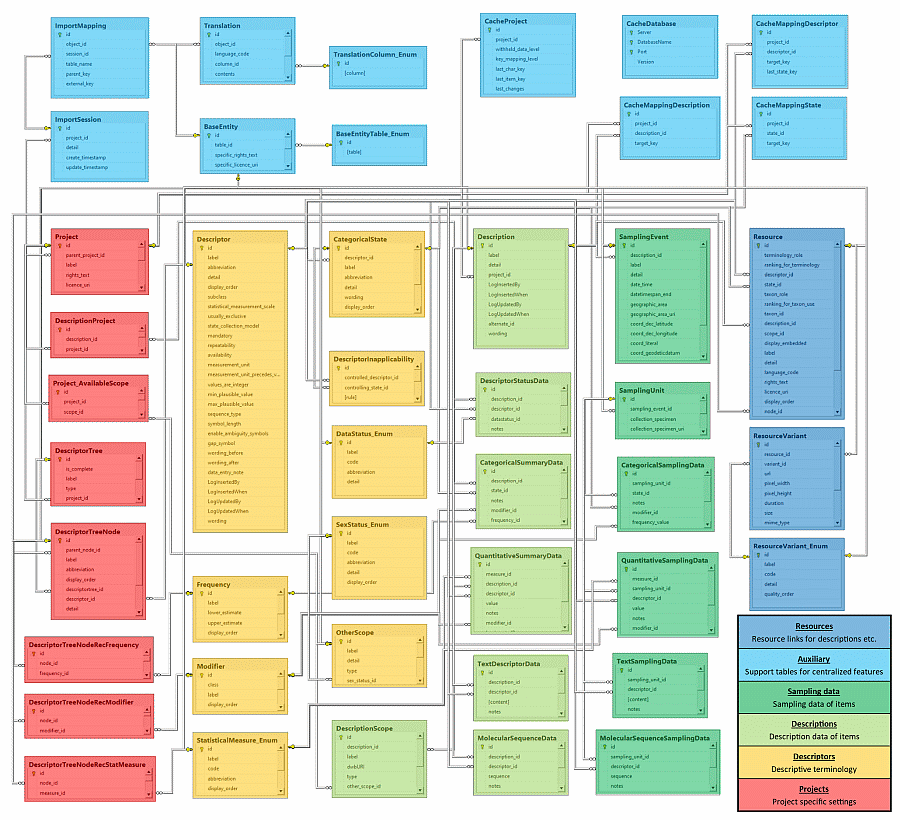
The database for DiversityDescriptions is based on Microsoft SQL-Server 2012 and higher.
The database consits of three major parts:
1. The "Descriptive terminology" with the main tables "Descriptor" and "CategoricalState" provides the means to express the description details. The two fixed enumeration tables "DataStatus_Enum" and "StatisticalMeasure_Enum" provide values defined in the SDD standard 1.1 rev 5.
2. The "Descriptions" part with the main table "Description" reflects the items themselves. Each description must be assigned to a project (see part 3) and references entries from the descriptive terminology. These references are reflected by the tables "CategoricalSummaryData", "QuantitativeSummaryData" and "TextDescriptorData", where additional item specific data are stored.
3. The "Projects" part with the main tables "Project", "DescriptorTree" and "DescriptorTreeNode" build the anchor for the descriptions, which must be assigned to a project. Further functions are a hierarchical organization of the descriptors and restriction of the descriptive terminology to certain projects. Additionally it is possible, to define recommended values of statistical measure, modifier and frequency associated to certain branches of a descriptor tree or single descriptors. If for a certain project no descriptor tree is created, there is no restriction, i. e. all descriptors are allowed.
The image below shows the main tables of the database.

In the graphic the tables of the database are marked according to their logical groups. Additionally the database group "Resources" provides the option to assign links to resource files (pictures, audio, video) to certain descriptors, categorical states or descriptions. The "Auxilliary" group with the main table "BaseEntity" provides unique keys for the most of the other tables for building of relations. Furthermore it allowes a centralized realization of some features, e.g. support of translations supply imports and export to a cache database.